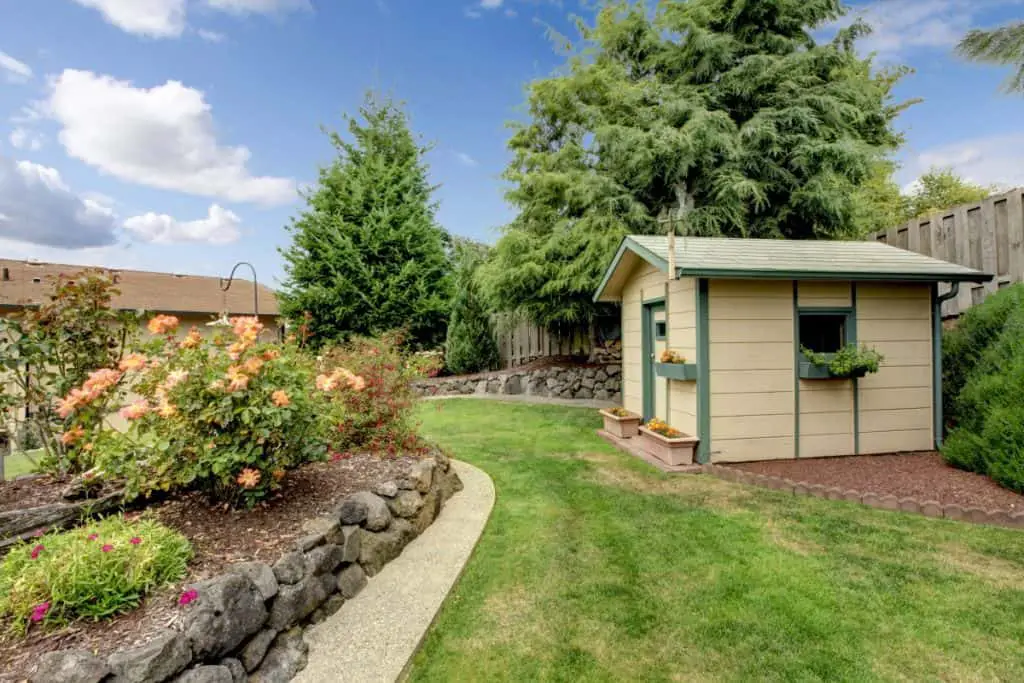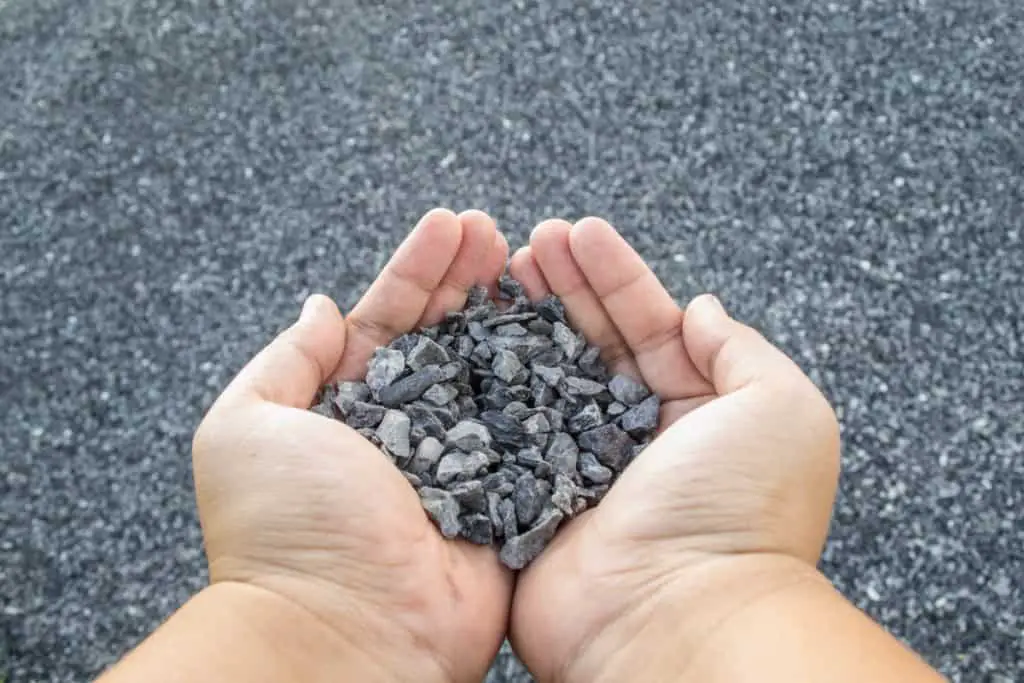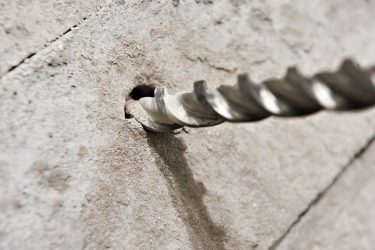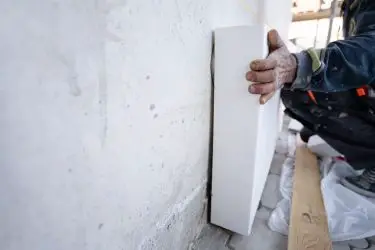Concrete is a fantastic material to make the foundation of a shed. However, it can be pretty labor-intensive to install, not to mention expensive.
For most sheds, 4 inches of concrete will be thick enough to support the entire structure. While some very small sheds built on sturdy ground can be supported with only 3 inches, this is the exception and not the rule. A 4 inch slab will need about 5-6 inches of excavation to install properly.
How much are four inches of concrete though? For some sheds, this might actually be a surprisingly large amount.

Table of Contents
How Big Are Most Garden Sheds?
Garden sheds come in all shapes and sizes. However, I would expect that most garden sheds are meant to fit in a garden and hold important tools.
Popular base dimensions for a garden shed are 8 by 6 feet. This should yield a fairly small shed that still has enough space to fit all sorts of useful tools like small lawnmowers or bags of fertilizer.
Your shed may be smaller or larger than that depending on the space that you’re working with.
There are various reasons you might not want to build a shed that’s too big, chief among them being that in many places there is a cut-off point where you will need a building permit to construct your shed.
In Seattle, for example, if the shed is larger than 120 square feet then you need a building permit.
This will be different depending on where you live, but it is important to do the necessary research on your location’s building codes before you start construction on any accessory building.
How Much Concrete Will I Need for a Garden Shed slab?
For a shed with dimensions of 8 by 6 feet, you will need 16 cubic feet of concrete to pour a four inches deep slab. That is equal to around 27 80-pound bags of concrete.
That’s over two thousand pounds of concrete!
And 8×6 is on the small side. For a larger shed, you’ll probably need several thousand pounds of concrete to cover the entire space.
There are a few reliable online calculators for the purpose of figuring out how much concrete you’ll need for a given project.
All you have to do is enter the dimensions of your project (including how deep you want the concrete to be in inches) and it will produce the numbers you need.
Why Should I Even Use Concrete for the Base Then?
Well, despite the sheer amount of it you’ll need, concrete has a few definite advantages.

It lasts for a very long time, and it is extremely sturdy. When it comes to being a material to make foundations out of, the concrete weight actually gives it a huge advantage here.
Its weight will make it extremely difficult to move around even in fairly intense conditions.
There just aren’t a lot of alternatives that offer the same structural soundness as concrete does.
Read more: Wood vs. Concrete Shed Foundation: Which Is Better?
However, for some smaller sheds, you might not even really need a foundation.
Sheds smaller than 8×6 might not need a foundation at all, although by not adding a foundation you may still be risking potential damage to the shed in the long term.
If you’re worried about the money or effort required to make a concrete foundation for your shed, it’s probably fine to just make a smaller shed that will not need one.
When Can I Start Putting Up The Walls For My Shed?
Your foundation will be safe to walk on after only a day or two, but that doesn’t mean that it’s ready for you to put the walls on yet.
Applying too much pressure to your concrete while it’s curing can damage it, and the sustained pressure from a building can cause minor damage even if it’s quite light.
You should wait around three days before putting up the walls and roof of the shed.
If the weather isn’t too cold, this should be more than enough time. If the weather is cold, you’ll want to keep track of the ambient temperature for this entire time.
Whenever the temperature drops below 50 degrees Fahrenheit, the concrete is in danger to freeze. When it does, it will stop curing until the temperature goes back up.
Be sure to exclude any time the concrete is under 50 degrees when counting up the time it’s spent curing.
Read more: Pouring Concrete in the Cold: How to ensure it won’t crack
Once your concrete is cured, it should be ready for you to put walls and a roof on top of it. As long as you’ve been careful, it should be fairly unlikely for your foundation to have any problems in the foreseeable future.
The Importance of Gravel When Installing a Concrete Slab
Concrete alone does not make a foundation. You’ll want to excavate around six inches deep and add approximately 2 inches of gravel underneath the concrete foundation.
This serves several important functions:

- Shifting: If the concrete is placed directly on soil or clay, it can easily begin to shift or sink because of its weight. Gravel disperses this weight out over more space, helping the gravel to stay where it is.
- Drainage: Having water build-up underneath concrete can lead to serious damage, and many types of the earth including clay won’t drain water away at all. Having a buffer space of gravel can help keep your foundation safe and dry.
- Cracking: Having gravel to rest on also helps prevent the concrete from cracking, which can occur if it’s resting on a surface that often moves around. Gravel doesn’t tend to do that very much, which can increase the longevity of your foundation by a lot.
- Leveling: Gravel generally provides a fairly level surface for your concrete to rest on, which can both save you money and keep your concrete from sustaining damage.
Laying gravel under your concrete is a very important step in making a long-lasting foundation for your shed.
It shouldn’t be neglected, since it can protect your foundation from a lot of wear and tear.
Your shed should do well with its 4-inch foundation. It may take a lot of concrete, but it is certainly worth building a long-lasting shed that you can be proud of for years to come.
Also Read: How To Pour a Concrete Slab: The Ultimate DIY Guide



